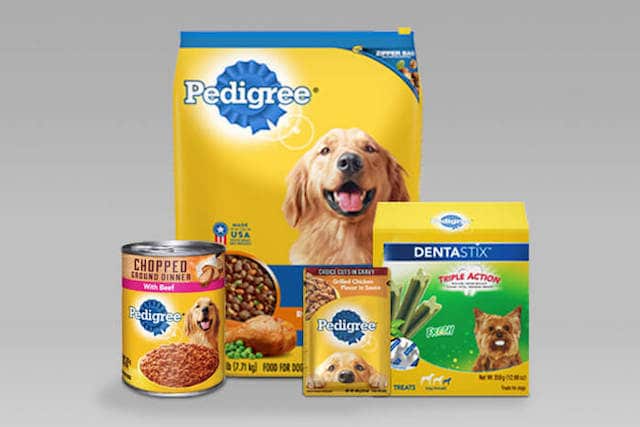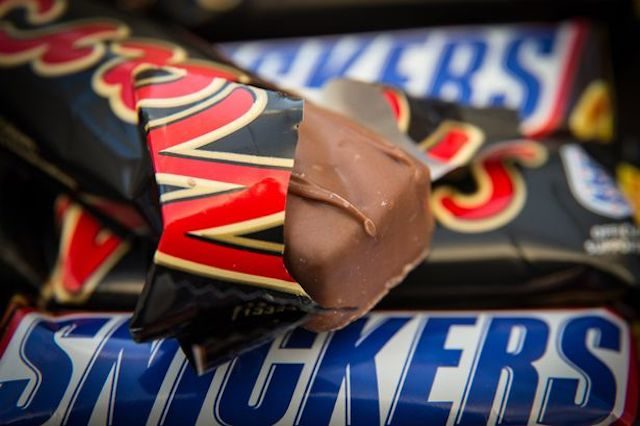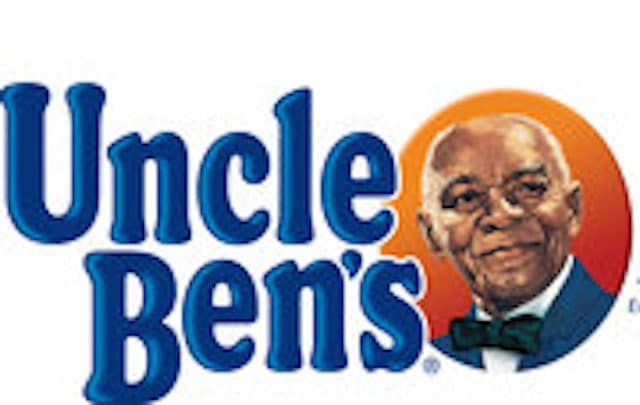Young or old, we all love candy and the Mars Company has been making some of the most popular and beloved candy bars and confections for as long as most of us can remember. They are known around the world for beloved items like the Mars Bar, Snickers, M&M’s and so many others. However, they are also suppliers of more than just candy. Mars also owns multiple popular pet food brands, as well as the Wrigley Company and several other brands. The history of the Mars Company and their products is a fascinating journey through the land of sweets.
10. The Milky Way in the US is the Mars Bar in the United Kingdom

Those who live in the United States are very familiar with a candy bar known as the Milky Way. It is made up of nougat and caramel coated in chocolate and is incredibly delicious. The name is actually inspired by the fact that the creator was trying to mimic the popular malted milkshakes of the day, and not really inspired by our galaxy as some imagine. Many of us who love this candy bar may take it for granted when traveling, only to find that it doesn’t exist in quite the same form in other parts of the world.
In the United Kingdom and almost everywhere else it is sold besides the USA, there is a very similar bar – although not made with the exact same ingredients – known as the Mars Bar, that replaces the traditional Milky Way in those regions. To make matters more confusing, you may actually see a candy bar called the Milky Way when traveling abroad, but that version of the Milky Way is actually the European version of our current 3 Musketeers bar. And yes, all of these are produced, sold and marketed by the Mars Candy Company.
9. The 3 Musketeers Has its Name Because it was Once Three Flavors Packaged Together

Many people have wondered why in the world the 3 Musketeers bar has the name that it does. It is a chocolate bar filled with a nougat fairly similar to that in a Milky Way, except airier and fluffier. It enjoys a certain strong popularity of its own in the United States, but that doesn’t bring most people any closer to an explanation. Most people cannot be blamed for not knowing either – the package no longer has any three musketeers on the logo, and it has been a very long time since the product namesake made since.
The reason it has its name is because originally, the candy bar was packaged to share with three separate pieces, and each piece was a different flavor – chocolate, vanilla and strawberry. Not long ago some of you may remember the Mars Company releasing a set of promotional mini 3 Musketeers candies with the flavors of Cappuccino, French Vanilla, and Strawberry, as a throwback to their roots. It would certainly be interesting if they brought back the original 3 Musketeers with all three bars wrapped in the same package, it would probably be a huge hit.
8. The Mars Company Also Owns Pet Food Brands Pedigree And Whiskas

When most people think of a candy company pet food is not something that immediately jumps to mind. However, the Mars Company has owned several pet food brands for many years now, including the well known Pedigree dog food brand and Whiskas cat food brand. Some might imagine that this was simply part of some strategic acquisition or deal, but Mars is very serious about their pet food business and has been going to great lengths to increase their market share and dominance in that sector.
Just a few years ago in 2014 Mars coughed up almost three billion in cash to Proctor and Gamble to buy up most of their existing pet food business, which includes the brands Iams, Natura and Eukanuba. The president of their petcare division was excited about the deal and had this to say “the deal reinforces our leadership in pet nutrition and veterinary science”. We are not saying the Mars Company doesn’t own good pet food brands, but we don’t think what most people know Mars for is pet food. Most people aren’t even aware they own pet food brands at all and know them mainly for their popular candy products such as M&M’s or Snickers.
7. During WW2 M&M’s Were Only For Soldier Rations

M&M’s have a very fascinating history indeed that is steeped in the lore of wartime. It is said that originally Forrest Mars Sr. had witnessed troops in the Spanish Civil War eating chocolate that was encased in a hard candy shell. He noticed that the chocolate was managing to avoid entirely melting in the hot temperatures, and he decided he wanted to perfect the idea into a perfect candy. He approached a man named Murrie who worked as an executive for Hershey’s and struck up a partnership – incidentally their two names are what the two M’s stand for.
With World War II starting Mars saw an opportunity and started selling the candy exclusively for use in soldier rations for the duration of the war. The troops found it very convenient as it was easily packaged in small tubes, and didn’t melt easily in the heat, making it easy to preserve and transport in the thick of troop movements. Eventually the war ended and all the veterans were already big fans of the product. With chocolate no longer being rationed and the veterans introducing it to their family and friends, M&M’s became the runaway success that they are known for today.
6. The Snickers Bar Was Actually Named After a Horse

The Snickers bar is easily the most iconic candy in the United States of America. No one really needs an introduction to this perfect candy bar. Not only great tasting, but filling enough and with real peanuts which could make it feel more like a real snack. It has enjoyed incredible popularity in the United States since its inception, but most people never stop to think where the name comes from. Many candy bars have rather odd fanciful names that we never take the time to stop and think about. Probably in the case of the Snickers we don’t think about it too much because it sounds rather strange and doesn’t seem like it has much to do with the candy at all.
The reason for this is because the Snickers was named after the Mars families’ favorite horse at the time, and they thought it would be fun to name the candy bar after him. There really is nothing connecting the candy and the horse besides a flight of whimsy. Strangely though, the name was once again different when it was marketed in the United Kingdom, where it was originally known as the Marathon Bar and enjoyed popularity at the top spot for many years. However, for continuity sake Mars changed the name worldwide to the Snickers Bar and the sales in the UK dropped significantly. Generally consumers don’t take well to a products name being changed out of the blue after so many years.
5. Mars Got Into a Dustup With Vegetarians in the United Kingdom

Back in 2007 vegetarians got angry over a very small amount of potential animal rennet in their confections. Mars had told the public that they were switching from a form of whey that came from microorganisms to a form of whey that comes from rennet – an animal byproduct taken from the stomach of calves. After a week of criticism Mars agreed to back down on using it in some of their products, but was also unwilling to pull it from all of their products entirely. This left many people who were following a strict vegetarian lifestyle angry with the company. They felt that Mars was not entirely backing down, and also that there was still confusion over what did and not did include animal rennet.
The reason for this is that there was no recall, as too many products had already gone out and there wasn’t any health risk with them – most people, even vegetarians, will not freak out about a small amount of potential animal byproduct in an already unhealthy candy bar. So many vegetarians complained that even though the company was leaving a few product lines without the whey with animal rennet, that there was no way to know for quite some time if they might be eating one of the vegetarian unsuitable versions that had already shipped out. Mars argued in return that their hadn’t been any boycott or noticeable effect on their sales, and that they were already bending over backward to please a small minority.
4. Mars Owns Uncle Ben’s Rice and Has Tried to Smooth Over the Controversially Racial Roots

Another brand many may be surprised to know is owned by Mars is the Uncle Ben’s instant rice company. An incredibly famous product ubiquitous in grocery stores around the United States and likely other parts of the world as well. Everyone knows the image and many of us feel a little strange knowing the likely origin of the image. Similar to Aunt Jemima’s pancake syrup brand, it pictures an African American in a role that depicts them as a servant preparing food for white people. The clothes worn by both of them and the title used, as well as the lack of a last name, tends to give a lot of people misgivings and wonder about what the creators were thinking when the brand was first designed.
When Mars acquired Uncle Ben’s rice not that many years ago they decided that they wanted to try to change the image to uplift the brand from its controversially racial origins. They put together a marketing campaign where Uncle Ben was depicted as the chairman of the board of his company, in a fancy office overseeing all decisions regarding the product. The advertising campaign depicted him as a wise leader who always knows best, while still leaving him with the bow tie he was known for. The reactions from many African Americans were mixed. Some people felt that it was a good step that helped rehabilitate the image of the brand, but others said it felt like it was glossing over the past and trying to hold onto something they would prefer to go away. To Mars credit, most people seemed to feel that an honest effort was being made to overcome the racially charged past of the brand.
3. The Reese’s Pieces in E.T. Were Supposed to be M&M’s, but the Mars Company Declined
E.T. is an iconic movie, and once of the most well known scenes, as well as the most famous product placements ever in movies, was the scene with the Reese’s pieces. We all know it well, and someone at Hershey’s is probably still gloating over the acquisition of a lifetime. See, the original candy intended to be used in the film were M&M’s and Mars was approached about doing a tie-in deal with the movie. In a move that someone may still be kicking themselves for, the Mars Company declined to have M&M’s in the movie or do any kind of marketing deal. Some people claim that the executive who made the decision didn’t want their product in a movie with a strange alien being, others say that they simply didn’t think the movie was going to be successful and didn’t want to tie their brand to it. Whatever the reason, the Mars Company declined, and the filmmakers were stuck looking for an alternative.
Realizing there was a similar, but not as popular candy made by Hershey’s, they struck up a deal to use Reese’s Pieces instead. The movie was successful beyond anyone’s wildest dreams, Hershey’s was able to use E.T. in their advertising to create a very successful association in the minds of consumers and sales of Reese’s Pieces shot up by a huge margin, gaining a strong share in the market that they had never had before.
2. Mars Has Been Criticized in the Past For Their Chocolate Buying Practices

Mars and all the other major chocolate giants have a huge problem that is hard to ignore – the fact that their chocolate, and essentially all chocolate, comes from countries where child labor, abuse and oftentimes what amounts to outright slavery are incredibly common. This has been the subject of many documentaries and lawmakers have tried to force the chocolate industry into self-policing and helping to end the child labor practices. After all, the chocolate industry is so rich it dwarfs the economies of the countries it buys chocolate from, so the power is mainly in their hands. Many of the chocolate makers have pledged to try to end child labor, but the goalposts keep shifting.
For many people the major chocolate makers such as Mars, Nestle, and Hershey’s are not doing nearly enough to deal with the issue. One of the original deadlines to majorly curb child labor was back in 2005, but the deadline was then extended to 2008 and then 2010. When 2010 came around the major manufacturers of chocolate candy made a new pledge to reduce child labor in the Ivory Coast by 70% by 2020. Not only is that another ten years away, but that isn’t even three quarters of the child labor reduced. It would seem that companies that have more money than the economies they are buying from could do more to prevent child labor and exploitation if they really wanted to.
1. Mars and Other Companies Have Moved Recently to Remove Artificial Dyes From Their Products

Recently many companies in the food industry have moved to start removing artificial dyes. One of the most famous examples is the move by Kraft to use only natural coloring in their famous instant macaroni and cheese products. What may be more surprising is that candy companies are starting to follow suit, despite not being generally known for trying to appeal to the health conscious. This shows that consumers today are increasingly concerned about artificial ingredients, even when indulging in less than healthy snacks.
Mars specifically made the news in 2016 when they promised to remove all artificial dyes from their human products and move to natural options. They did add the caveat that this will not happen right away. They expect to finish removing all artificial dyes in five years, but they are still looking for some of the best natural alternatives and it will take time to cycle old inventory out and bring in the new. This includes any Wrigley products such as Starburst and any other food lines, but does not include pet products at this time. While this may not seem huge, moving toward natural dyes can only be a good thing. More and more studies seem to suggest that many artificial dyes are dubious in terms of whether they are truly safe to be consuming on any kind of regular basis. A natural alternative that is proven safe would make people feel better about what they are eating in a world with increasingly processed foods and ingredients.